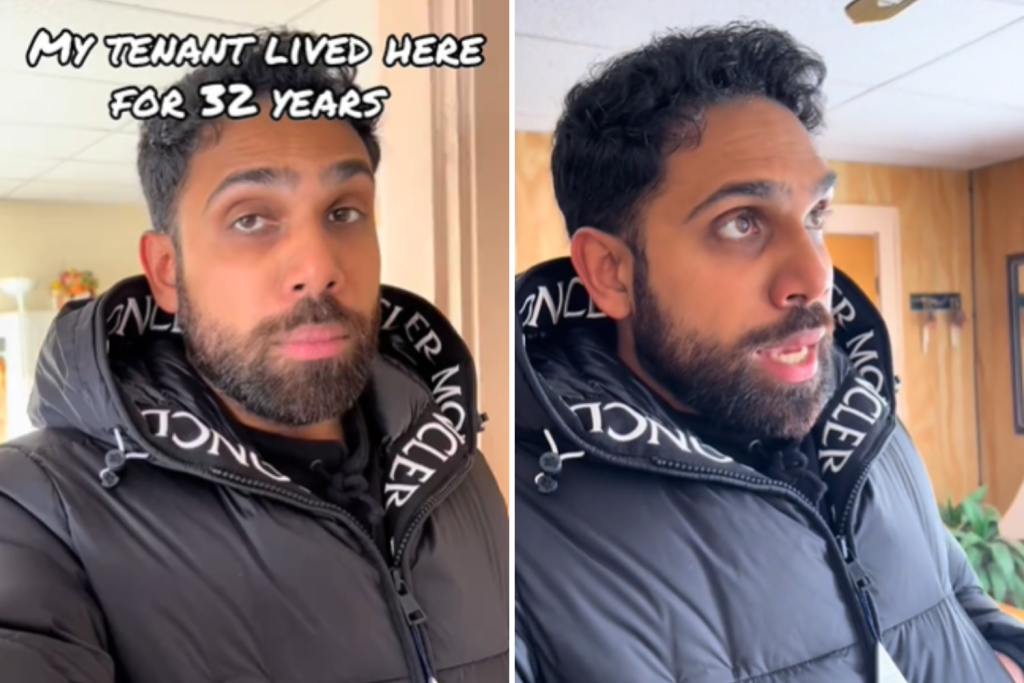In a remarkable discovery, a Maine landlord, Syed Zafar, stumbled upon a time capsule of sorts after a long-term tenant vacated an apartment. The tenant, a woman, had resided in the unit for an astonishing 32 years, since 1992, a period predating Zafar’s own birth in 1993. Zafar, who acquired the building in May 2024, was astounded by the pristine condition of the apartment, which seemed almost untouched by the passage of three decades. The carpets and floors remained flawless, a testament to the tenant’s meticulous care, even though the appliances were older than the landlord himself. This extraordinary longevity in a single rental unit starkly contrasts with the average tenancy duration of just over two years, highlighting the rarity of such a long-term residency. The apartment’s well-preserved state has sparked a wave of interest and admiration online, prompting discussions about the value of respecting well-maintained older spaces.
The exceptional preservation of the apartment is particularly noteworthy given the transient nature of modern renting. According to ResidentRated, the average renter in a multi-family building in the United States stays for a mere 27.5 months. While renters in the Northeast tend to stay slightly longer, averaging 32.9 months, the national average underscores the frequency with which renters relocate. The previous tenant’s 32-year tenure, therefore, represents an outlier, a testament to a bygone era of longer-term rentals and a deeper connection between tenant and dwelling. This unusual longevity emphasizes the unique nature of the discovery, making it a captivating story of a home frozen in time.
Adding to the remarkable nature of this find is the speed with which renters typically secure new accommodations. Data from the U.S. Census Bureau reveals that in 2023, over half of renters found a new place in less than a month. This rapid turnover further accentuates the extraordinary length of the previous tenant’s stay. The fact that nearly half of renters viewed units in only one neighborhood and the majority visited just one unit within that neighborhood before committing to a lease underscores the fast-paced nature of the rental market. In contrast, the previous tenant’s decades-long residency stands as a stark contrast, a relic of a different time and a testament to a long-term commitment rarely seen in today’s dynamic housing market.
Zafar, captivated by the apartment’s remarkable condition, decided to share his discovery with the world. He posted a video tour of the pristine space on TikTok, where it quickly went viral, garnering over 950,000 views and 25,000 likes. The video resonated with many viewers, who expressed their astonishment at the 32-year tenancy and the exceptional upkeep of the apartment. Some commenters even urged Zafar to preserve the apartment’s original charm, suggesting minimal renovations to maintain its unique character. This online response highlights the public’s appreciation for well-maintained older spaces and the nostalgia they evoke.
The comments on Zafar’s TikTok video reflect a diverse range of perspectives. Some viewers expressed disbelief at the prospect of renting for such an extended period, while others admired the tenant’s dedication to maintaining the apartment’s pristine condition. Several commenters urged Zafar to consider preserving the apartment’s original features, highlighting a growing appreciation for vintage aesthetics and the sustainable practice of reusing existing structures. This online discussion underscores the evolving attitudes towards housing, with a growing segment of renters valuing character and history over modern amenities.
While Zafar plans to renovate the apartment before renting it out again, the story serves as a poignant reminder of a slower-paced era in renting, where long-term tenancy was more common. The apartment, a time capsule of sorts, offers a glimpse into the past, showcasing a level of care and preservation rarely seen in today’s transient rental market. While modernization is inevitable, the story highlights the value of appreciating the history and character of older spaces and the stories they tell. Zafar’s discovery has sparked a conversation not just about long-term rentals but also about the importance of preserving the past while embracing the future of housing.

